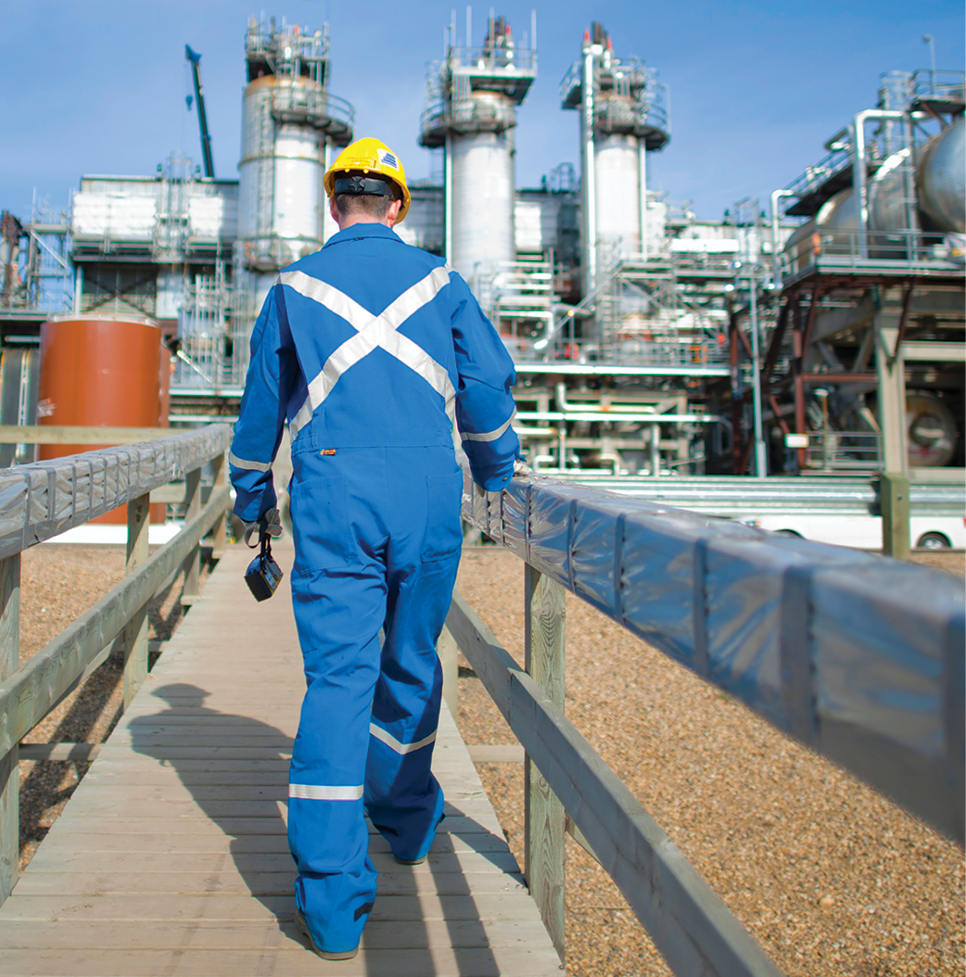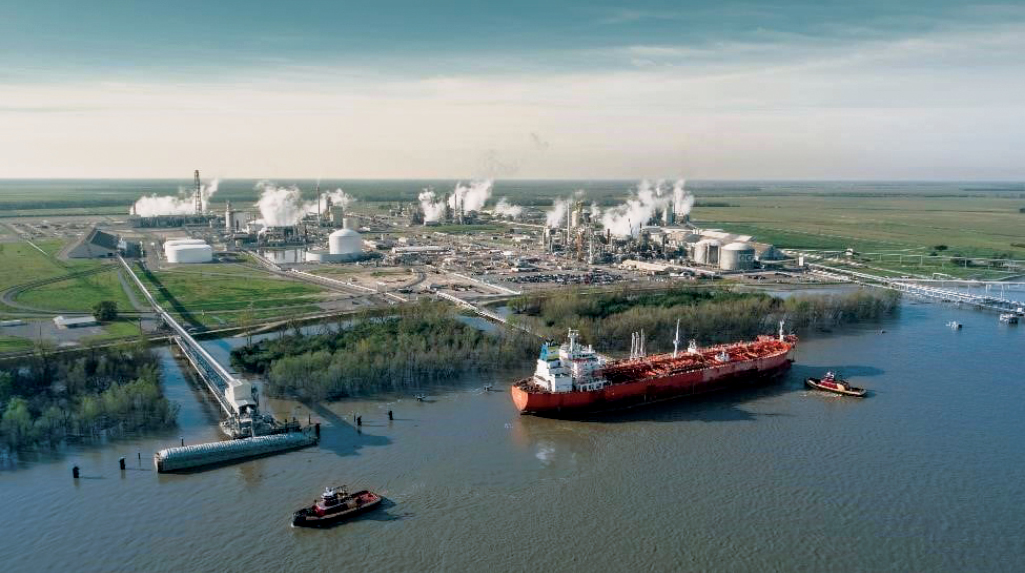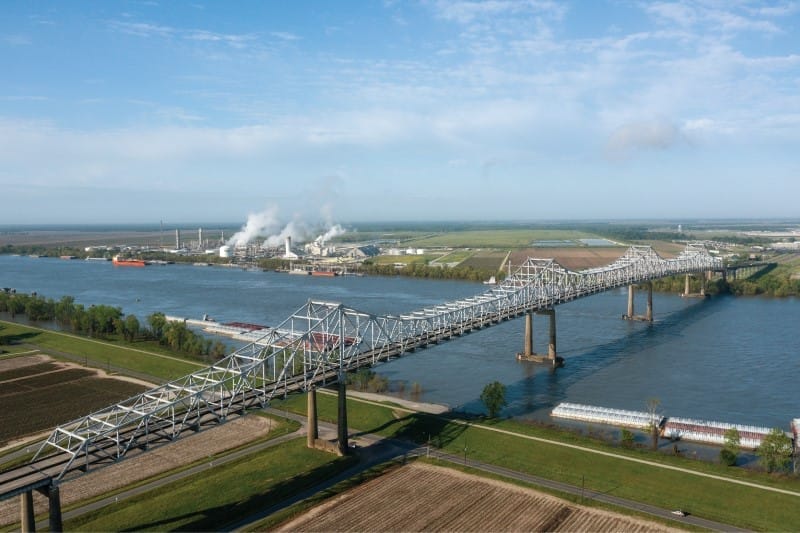In the midst of the clean energy race, companies appear to have found Louisiana’s geological makeup ideal for pursuing sustainable large-scale carbon capture and sequestration.
In turn they’re investing billions in the process.
Ascension Parish is one region that knows clean energy production. Its position along the Mississippi River provides industry with an abundant water supply, robust transportation infrastructure and access to both low-cost natural gas supply and the world’s largest hydrogen pipeline.
Since 2019, this region has secured $6.6 billion in new investment or expansions from Methanex, Chevron Renewable Energy Group and Air Products, whose projects are set to reach completion by the end of 2023. In 2022, $11.5 billion in potential investment was announced within the parish, though final investment decisions are still to come for these projects.
These pending decisions come from CF Industries and Japan-based Mitsui & Co., as well as Clean Hydrogen Works (in partnership with Denbury Carbon Solutions and Hafnia) for new blue ammonia facilities. Nutrien intends to build the world’s largest low-carbon ammonia plant.
“A typical due diligence timeline for a small project is 12 to 18 months. A project with over a billion dollars in capital investment could take 24 to 36 months from the first point of contact to the final investment decision,” says Ascension Economic Development Corporation President and CEO Kate MacArthur. “For both CF Industries and Clean Hydrogen Works an announcement was made pending a final investment decision. We anticipate a final investment decision from CF Industries by the end of 2023 and Clean Hydrogen Works in mid-2024.”
CF Industries is among a plethora of leading clean energy manufacturers that continuously invest in the state. Right now a new $198.5 million carbon dioxide dehydration and compression plant is in the works.
The largest ammonia production facility to date will be located in the company’s Donaldsonville “Blue Point” Complex. The facility will aid in reducing CO2 emissions produced by its current ammonia network. Slated for completion in Q4 of 2024, this addition will enable preparation of up to 2 million tons of CO2 for permanent sequestration and marketability of 1.7 million tons of blue ammonia each year.
The project was approved for Louisiana’s Industrial Tax Exemption program and will create 12 new jobs at an average salary of $100,000.

CF Industries and Mitsui & Co, are now conducting their FEED study at the Blue Point Complex.
Photo courtesy of CF Industries
“This is only the beginning of clean energy technologies. We hope that the long-term impact of these projects and the incentives for clean energy deployment will continue to push research and development and innovation that will materialize in new technologies and projects for decades to come,” says MacArthur.
More To Come
A week and a half following its carbon capture project news in August 2022, CF Industries and Mitsui & Co. announced their proposed $2 billion blue ammonia production facility, which will also be constructed at the Donaldsonville Complex. It is estimated that the project would create 103 direct new jobs and 311 indirect jobs, according to Louisiana Economic Development.
The companies are in the midst of a front-end engineering and design study, which takes nine to 12 months to complete. Once a final investment decision is made, construction will take place over a four-year period.
“We believe that ammonia will play a critical role in accelerating the world’s transition to clean energy and that demand for blue ammonia for this purpose will grow meaningfully in the coming years,” said CF Industries President and CEO Tony Wills. “We are pleased to be able to leverage our previous investments in Louisiana to add CO2 processing technology to our Donaldsonville complex that will enable a significant volume of blue ammonia production by the middle of the decade. This will position CF Industries and Louisiana at the forefront of this emerging global market.”

MacArthur’s innovation hopes within this industry are not far-fetched for Ascension Parish or the rest of the state, as the industry continues to gain global attention for its ammonia capacity resulting in partnerships that build on existing synergies throughout Louisiana.
The other massive blue ammonia project investment on the books will be Clean Hydrogen Works’ $7.5 billion, 1,700-acre project located along the west bank of the Mississippi River at the parish’s RiverPlex MegaPark.
The project, operating under the name Ascension Clean Energy (ACE), is a joint venture among Clean Hydrogen Works, Denbury Carbon Solutions and Denmark’s leading tanker company Hafnia.
While the final investment decision is slated for 2024, preparations are well underway. Denmark-based Topsoe, a globally renowned hydrogen and ammonia technology licensor, was selected in December 2022 to aid in carbon capture at the site.

CF Industries has continued to build at its Blue Point Complex in Donaldsonville.
Photos courtesy of CF Industries
“We are delighted to have been selected to support this flagship project that will showcase not only Topsoe’s world leading hydrogen and ammonia technologies, but also ACE’s leading role in the energy transition to decarbonized fuels,” said Topsoe Senior Vice President Peter Vang Christensen in a release.
According to project data listed on the ACE website the site is expected to capture up to 98% of CO2 emissions and produce approximately 7.2 million metric tons of ammonia. As Denbury Carbon Solutions currently operates the largest U.S. CO2 pipeline out of Texas, they will lead transport and sequestration of captured emissions. Blue ammonia will then be exported to overseas energy markets by Hafnia.
“We have longstanding relationships with European companies in our community such as BASF, Shell, Huntsman and Air Liquide and have recently been attracting projects from Japan and Australia,” says MacArthur. “The CHW and CF projects would bring partners from Denmark and Japan. Being in a state well known for global exports we would like to one day be known for our global business diversity as well. While the majority of the products manufactured will be exported, our region will take advantage of these new technologies to reduce our industrial carbon footprint and continue to improve air quality.”
Once committed, ACE will be built out in two blocks. The initial phase of the project, or block one, will begin construction immediately and will begin production by 2027. At peak construction the site will create 1,500 construction jobs, with 350 direct new jobs expected when operations commence.
Energizing Its Workforce
Massive growth within the industry means workforce development initiatives are in full swing to prepare a robust talent pipeline.
In 2022, The H2theFuture Coalition was awarded a $50 million grant from the U.S. Economic Development Administration to develop a new energy cluster in South Louisiana focused on creating jobs and lowering carbon emissions. The coalition, led by Greater New Orleans Inc. and Greater New Orleans Development Foundation, will use the funding across five areas: workforce development, business development, university testbeds, a new energy center and building public-private partnerships.
“We have longstanding relationships with European companies in our community such as BASF, Shell, Huntsman and Air Liquide and have recently been attracting projects from Japan and Australia … Being in a state well known for global exports we would like to one day be known for our global business diversity as well.”
— Ascension Economic Development Corporation President and CEO Kate MacArthur
Beyond regional partnerships, Louisiana teamed up with Oklahoma and Arkansas for a bipartisan three-state partnership to create the HALO Hydrogen Hub. In January 2023, the hub was encouraged by the U.S. Department of Energy (DOE) to submit an application for the Regional Clean Hydrogen Hubs Program to compete for $7 billion in funding through the Infrastructure Investment and Jobs Act.
The advantages of this partnership exist around the existing infrastructure among the three states. Port systems, rail, interstate and pipeline infrastructure provide routes of transportation for low-carbon hydrogen produced in the states, ultimately allowing for each to introduce hydrogen as an energy resource for industries carrying high carbon footprints.
HALO applied for up to $1.25 billion in funding for a regional clean hydrogen hub as a location to demonstrate the production, processing, delivery, storage and end-use of clean hydrogen. As of now, the application is in review and the DOE is expected to announce its recipients by fall of 2023.
In Ascension Parish alone 43% of the workforce is engaged in production-related occupations. As hundreds of jobs prepare to hit the industry, the state’s institutions are prepping students and existing talent for the skills necessary to land these high-quality roles.
“The energy industry has always been an economic driver for Louisiana and we want to stay on the forefront of various forms of energy production while utilizing the skills of our existing workforce,” says MacArthur.
But that doesn’t mean training efforts are not spread across every education level.
Early training options through Ascension’s Donaldsonville and East Ascension High Schools offer students training in both process technology and welding to prepare for a career within the industry. These programs are catered toward needs vital to the ever-changing industry and are annually assessed by the Greater Baton Rouge Industrial Alliance to keep curriculum relevant.
For MacArthur, River Parishes Community College is a critical component to the success and longevity of employers in the region. Its Workforce Solutions program works with industries to create targeted skills and training courses or allow individuals to become industry-certified on their own.
At the highest level, Louisiana State University supplies an array of long-term workforce development programs. Among the university’s assets is the Institute for Energy Innovation which focuses on energy-related research, education and training of the state’s workforce. Additionally, it is the only university with a carbon capture usage and storage (CCUS) concentration as part of its petroleum engineering major, which could prove to be an immensely valuable resource in the coming years.
As billion-dollar projects eye Louisiana, there is a workforce and government eager to get those operations started in order to ensure the state’s leading role in the nation’s clean energy sector.

